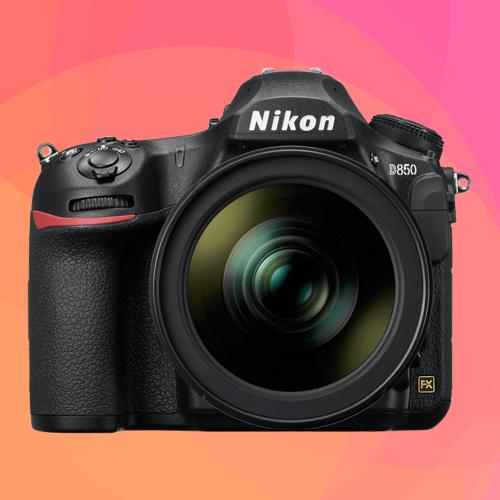
The Best Nikon D850 Lenses: A Comprehensive Guide
- Nathaniel Stephan
- Nikon d850 , Aps c DSL r
- June 7, 2023
Table of Contents
In the realm of photography, a picture is only as good as its lens allows it to be. With the Nikon D850’s high resolution and dynamic range, the choice of lens becomes even more critical. This guide will walk you through everything from the basics of camera lenses, their compatibility with the Nikon D850, to the best lenses for different types of photography.
| Lens Name | Focal Length | Maximum Aperture | Lens Type | Pros | Cons |
|---|---|---|---|---|---|
| Nikon AF-S NIKKOR 24-70mm f/2.8E ED VR | 24-70mm | f/2.8 | Zoom lens | Versatile zoom range, great low-light performance, effective vibration reduction | Heavier than its predecessor, relatively high price |
| Nikon AF-S NIKKOR 70-200mm f/2.8E FL ED VR | 70-200mm | f/2.8 | Zoom lens | Excellent image quality, fast autofocus, great for portraiture and sports | Relatively heavy, expensive |
| Nikon AF-S NIKKOR 14-24mm f/2.8G ED | 14-24mm | f/2.8 | Zoom lens | Exceptional sharpness, robust build quality, wide-angle capability | Distortion at wider angles, no filter thread |
| Nikon AF-S NIKKOR 50mm f/1.8G | 50mm | f/1.8 | Prime lens | Lightweight, great in low light, affordable | No vibration reduction, not as sharp as some other prime lenses |
| Sigma 35mm f/1.4 DG HSM Art | 35mm | f/1.4 | Prime lens | Sharp, high-quality build, great for street photography | Slightly heavy, no weather sealing |
| Nikon AF-S NIKKOR 105mm f/1.4E ED | 105mm | f/1.4 | Prime lens | Excellent image quality, great bokeh, fast aperture | Large and heavy, expensive |
| Tamron SP 150-600mm f/5-6.3 Di VC USD G2 | 150-600mm | f/5-6.3 | Zoom lens | Exceptional reach, good image stabilization, great for wildlife photography | Quite heavy, not as sharp at maximum zoom |
| Nikon AF-S NIKKOR 200-500mm f/5.6E ED VR | 200-500mm | f/5.6 | Zoom lens | Good value, excellent reach, good sharpness | Not as robust as pro-grade lenses, slower autofocus |
| Nikon AF-S Micro-NIKKOR 105mm f/2.8G IF-ED VR | 105mm | f/2.8 | Prime Macro lens | Excellent sharpness, effective image stabilization, great for macro photography | Not ideal for low light, focus can be slow |
| Zeiss Milvus 50mm f/1.4 | 50mm | f/1.4 | Prime lens | Excellent image quality, solid build quality, smooth manual focus | Manual focus only, expensive |
Affiliate Advertising Disclosure
Outside the Shot is a participant in the Amazon Services LLC Associates Program, an affiliate advertising program designed to provide a means for sites to earn advertising fees by advertising and linking to Amazon.com.
As an eBay Partner, I may be compensated if you make a purchase. I also participate in affiliate advertising programs with KEH and Adorama. More can be found on the Affiliate Disclosure page.
Nikon AF-S NIKKOR 24-70mm f/2.8E ED VR
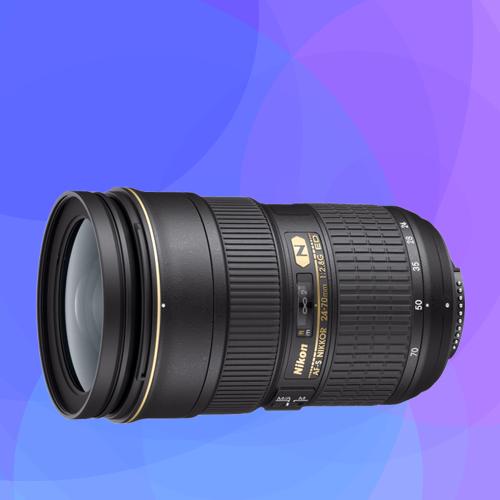
This versatile zoom lens is often considered a workhorse for many professional photographers. Its 24-70mm focal length makes it ideal for a wide variety of photography types, from landscapes and travel to portraits and events.
With its fast f/2.8 constant aperture, this lens performs admirably in low light and enables a shallow depth of field for that smooth bokeh effect. The lens also features Nikon’s Vibration Reduction technology, which helps to minimize camera shake for sharper images.
See current price and more information on:
Pros:
- Versatile zoom range suitable for various photography types
- Fast f/2.8 constant aperture beneficial in low light and for creating bokeh
- VR technology for minimizing camera shake
- Robust build and professional-grade image quality
Cons:
- Heavier and larger than some comparable lenses
- Relatively expensive
Nikon AF-S NIKKOR 70-200mm f/2.8E FL ED VR
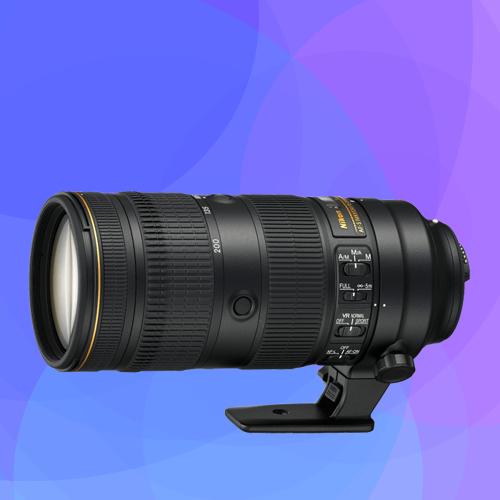
This lens is another staple in the camera bag of many professional photographers. It covers the 70-200mm focal length, a range that’s particularly useful for portraiture, event photography, and sports.
Like the 24-70mm, it also features a fast f/2.8 constant aperture and vibration reduction. Additionally, it has a fast, silent autofocus system and weather sealing to protect against dust and moisture.
See current price and more information on:
Pros:
- Great for portraits, events, and sports photography
- Fast f/2.8 constant aperture and VR for superior low light performance
- Fast, silent autofocus
- Weather-sealed for dust and moisture resistance
Cons:
- Heavier and larger, which may be challenging for handheld shooting over long periods
- High price tag
Nikon AF-S NIKKOR 14-24mm f/2.8G ED | 14-24mm
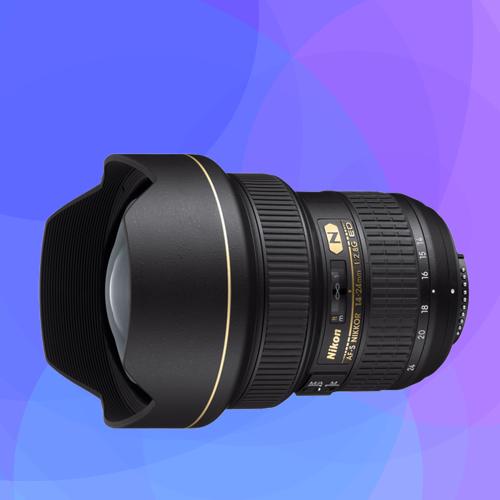
This lens is part of Nikon’s “holy trinity” of professional zoom lenses, along with the 24-70mm and 70-200mm. Its ultra-wide angle view makes it particularly suited for landscape, architectural, and interior photography.
Like its siblings, it offers a constant f/2.8 aperture for consistent performance across its zoom range. It’s also renowned for its exceptional sharpness and minimal distortion, even at the widest end.
See current price and more information on:
Pros:
- Ultra-wide view great for landscape, architectural and interior photography
- Fast f/2.8 constant aperture
- Exceptional sharpness and minimal distortion
Cons:
- Large and heavy
- No filter thread for screw-on filters
- Higher cost relative to other wide-angle lenses
Nikon AF-S NIKKOR 50mm f/1.8G
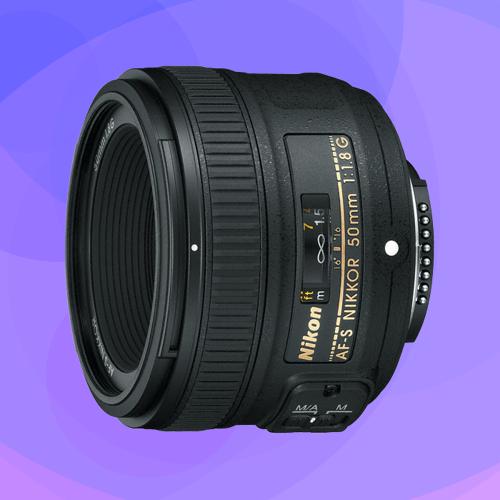
This compact prime lens is perfect for everyday photography, portraits, and street scenes. Its fast f/1.8 aperture delivers a beautiful bokeh, while allowing for excellent low-light performance.
See current price and more information on:
Pros:
- Compact and lightweight, ideal for travel
- Excellent image quality
- Wide aperture good for low light and creating bokeh
- Affordable price
Cons:
- No vibration reduction
- Autofocus can be slower compared to more advanced lenses
Sigma 35mm f/1.4 DG HSM Art
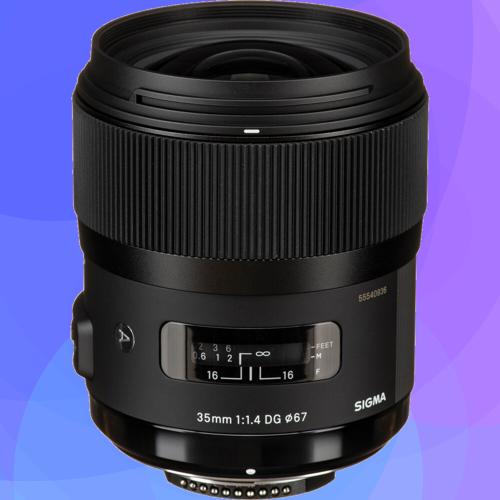
This lens is highly regarded for its sharpness and impressive aperture. At 35mm, it is an excellent choice for a wide variety of photography styles, including street, landscape, and event photography.
See current price and more information on:
Pros:
- Outstanding image quality
- Wide f/1.4 aperture for excellent low light performance and shallow depth of field
- Versatile for various types of photography
Cons:
- Larger and heavier compared to other prime lenses
- More expensive than comparable lenses
Nikon AF-S NIKKOR 105mm f/1.4E ED
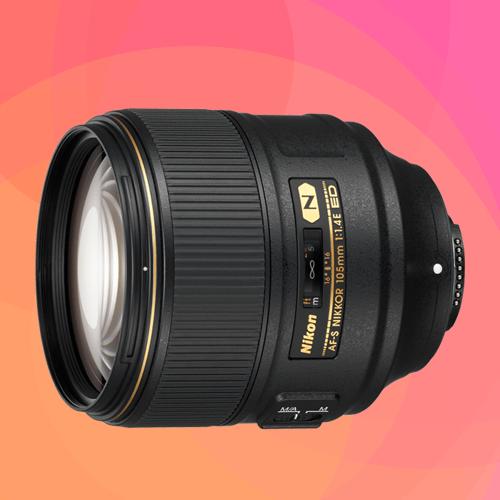
Known for its stunning bokeh and sharpness, this lens is an excellent choice for portrait and studio photography. Its f/1.4 aperture provides superb low light performance.
See current price and more information on:
Pros:
- Incredible image quality with high sharpness
- Wide f/1.4 aperture for excellent low light performance and bokeh
- Premium build quality
Cons:
- Heavy and large
- High cost
Tamron SP 150-600mm f/5-6.3 Di VC USD G2
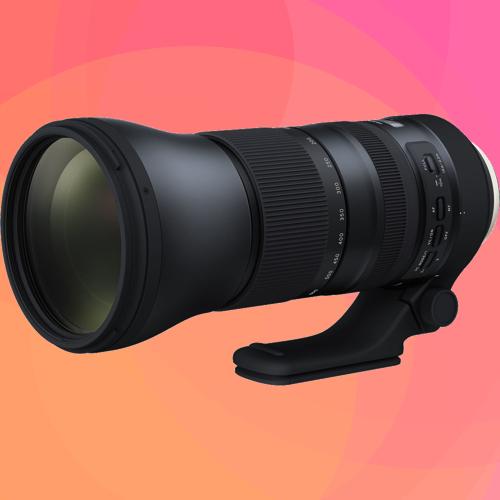
This Tamron lens is a fantastic choice for wildlife and sports photography, thanks to its incredible zoom range. Its vibration compensation feature helps to ensure sharp images at longer focal lengths.
See current price and more information on:
Pros:
- Superb zoom range ideal for wildlife and sports photography
- Vibration compensation for sharper images
- Good value for the price
Cons:
- Lower light performance due to f/5-6.3 aperture
- Larger and heavier due to zoom range
Nikon AF-S NIKKOR 200-500mm f/5.6E ED VR
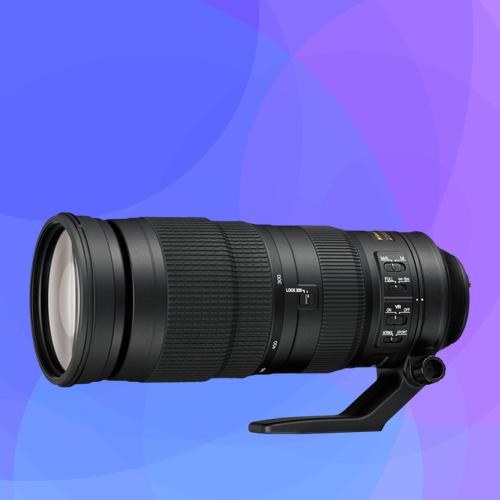
Another excellent option for wildlife and sports photographers, this lens offers a remarkable zoom range along with a constant f/5.6 aperture. Nikon’s vibration reduction is included to aid in capturing sharper images.
See current price and more information on:
Pros:
- Great zoom range ideal for wildlife and sports
- Constant f/5.6 aperture
- Includes vibration reduction
Cons:
- Bulky and heavy
- Lower light performance compared to lenses with larger apertures
Nikon AF-S Micro-NIKKOR 105mm f/2.8G IF-ED VR
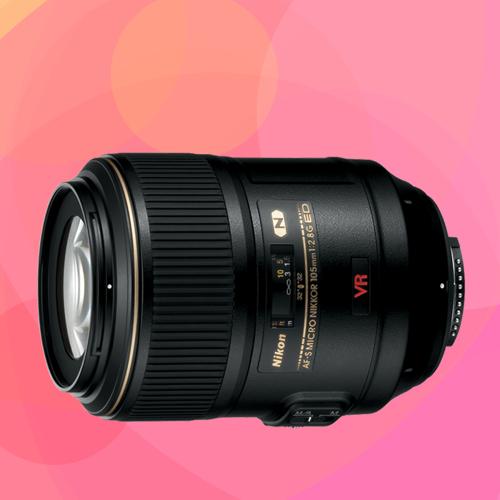
This lens is an outstanding option for macro photography. It allows for 1:1 magnification for true close-ups and has a fast aperture for creating a beautiful bokeh.
See current price and more information on:
Pros:
- Outstanding for macro photography with 1:1 magnification
- Fast f/2.8 aperture
- Includes vibration reduction
Cons:
- More expensive than other macro lenses
- Some may find it heavy for prolonged handheld use
Zeiss Milvus 50mm f/1.4
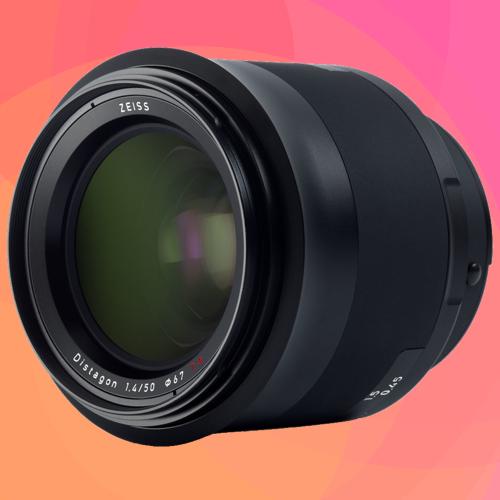
This Zeiss lens offers excellent image quality with sharp, detailed results and a fast aperture for low-light shooting and a great depth-of-field control.
See current price and more information on:
Pros:
- Exceptional image quality
- Fast f/1.4 aperture
- Great build quality
Cons:
- No autofocus
- Heavier and larger than comparable lenses
- Very expensive
Lens Basics for the Nikon D850
When you’re shooting with a full-frame powerhouse like the Nikon D850, understanding the basics of lens choice is critical to maximizing your camera’s potential. Here are some key concepts:
Lens Compatibility: The Nikon D850 uses the Nikon F-mount. This is one of the oldest lens mounts still in production, meaning there’s a vast range of compatible lenses, both from Nikon and third-party manufacturers.
APS-C vs Full-Frame Lenses: The Nikon D850 is a full-frame camera, which means it has a larger sensor than APS-C (crop sensor) cameras. Full-frame lenses (like the Nikon FX series) are designed to cover this larger sensor area. Using a lens designed for APS-C cameras on a full-frame body can result in vignetting, where the corners of the image are darkened.
Aperture: The aperture of a lens determines how much light it can gather. A lens with a wider maximum aperture (represented by a smaller f-number) can gather more light, enabling better low-light performance and a shallower depth of field.
Zooms vs Primes: A zoom lens offers a range of focal lengths, giving you flexibility in framing your shots without changing the lens. A prime lens, on the other hand, has a single fixed focal length but typically offers a wider maximum aperture and higher image quality than a zoom lens. The choice between a zoom and a prime lens depends on your shooting style and the specific needs of the shot.
Nikon D850 Lens Compatibility
The Nikon D850 boasts a F-mount lens mount, a feature it shares with the majority of Nikon’s DSLRs. The F-mount system is one of the oldest lens mounts that’s still in production and has been used by Nikon since 1959. This means that the Nikon D850 is compatible with a substantial number of lenses, both from Nikon and from third-party manufacturers.
The Nikon F-mount uses a mechanical linkage to connect the lens to the camera, allowing the camera to control the aperture and other settings. The D850, being a higher-end model, has an in-built focus motor, meaning it can use autofocus with older AF and AF-D lenses, as well as newer AF-S and AF-P lenses.
The Nikon D850 can use both DX (APS-C) and FX (full-frame) lenses. When using a DX lens, the camera automatically crops the image to the smaller sensor size that the lens is designed for, reducing the effective resolution but still providing excellent image quality. FX lenses are fully compatible without any cropping or reduction in resolution.
However, it’s important to note that Nikon’s newer Z-mount lenses, designed for their mirrorless Z-series cameras, are not compatible with the D850. These lenses use a different mount design that’s not physically compatible with the F-mount system. While Nikon does offer an adapter (the FTZ adapter) to use F-mount lenses on Z-mount cameras, there’s no equivalent adapter to use Z-mount lenses on F-mount cameras due to differences in flange distance and lens design.
Overall, the Nikon D850’s compatibility with a wide range of Nikon F-mount lenses, both DX and FX, gives photographers considerable flexibility to choose the lenses that best fit their shooting needs and style.
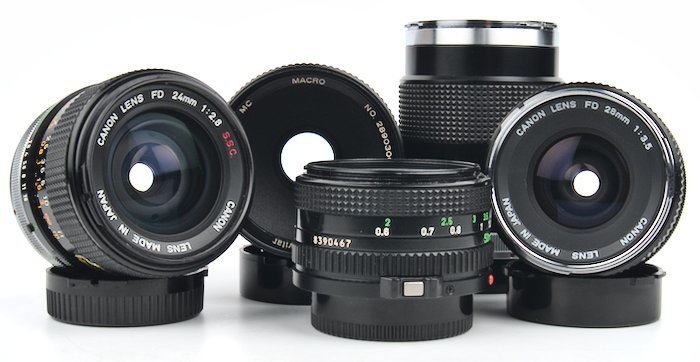
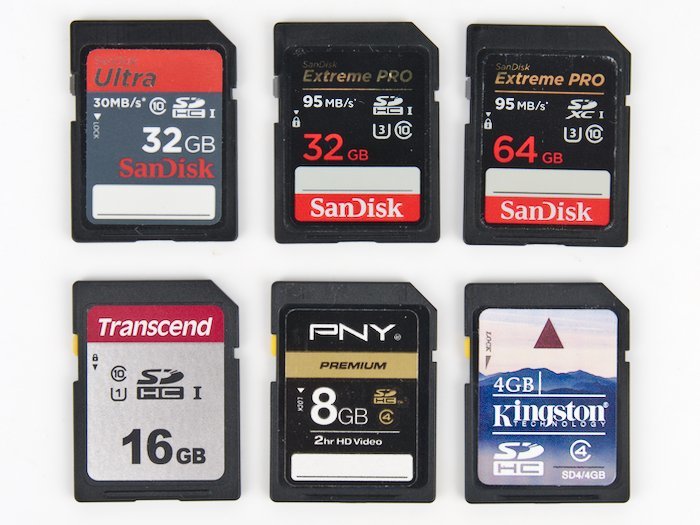
![Vivitar 55mm f/2.8 Macro Lens Review [Komine]](https://www.outsidetheshot.com/lens-reviews/Vivitar-55mm-f28-Macro-Lens.jpg)